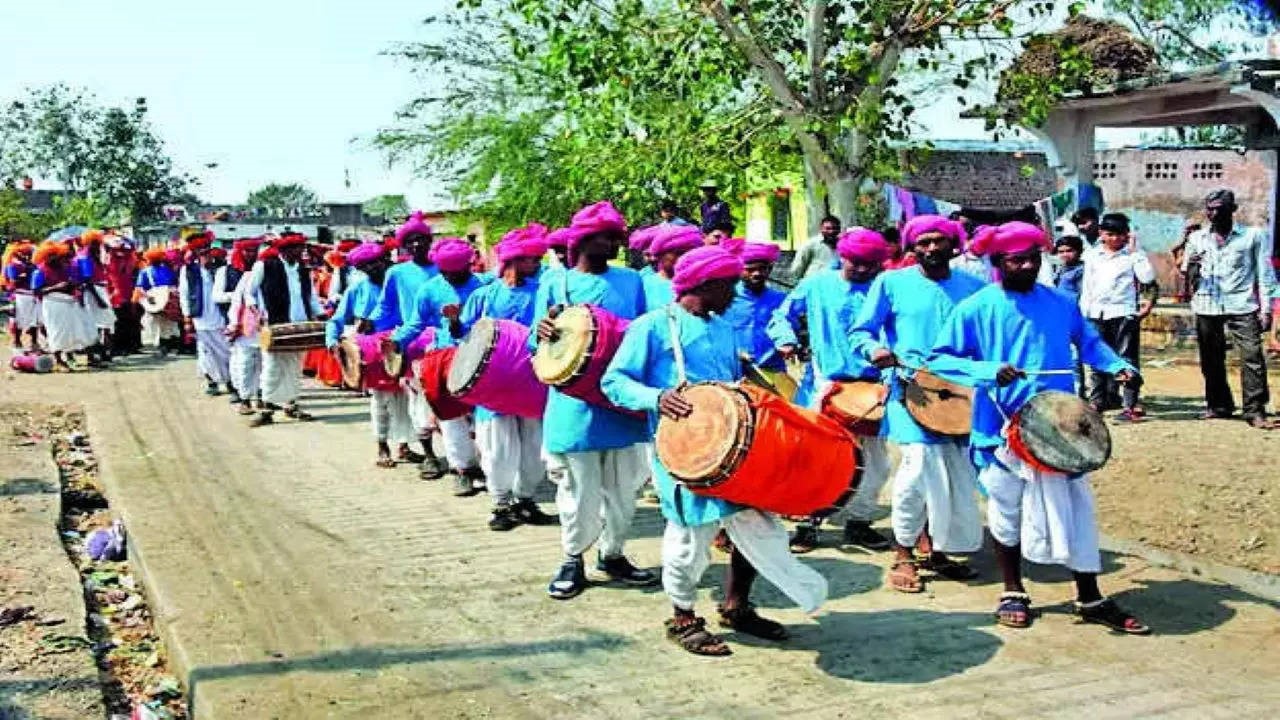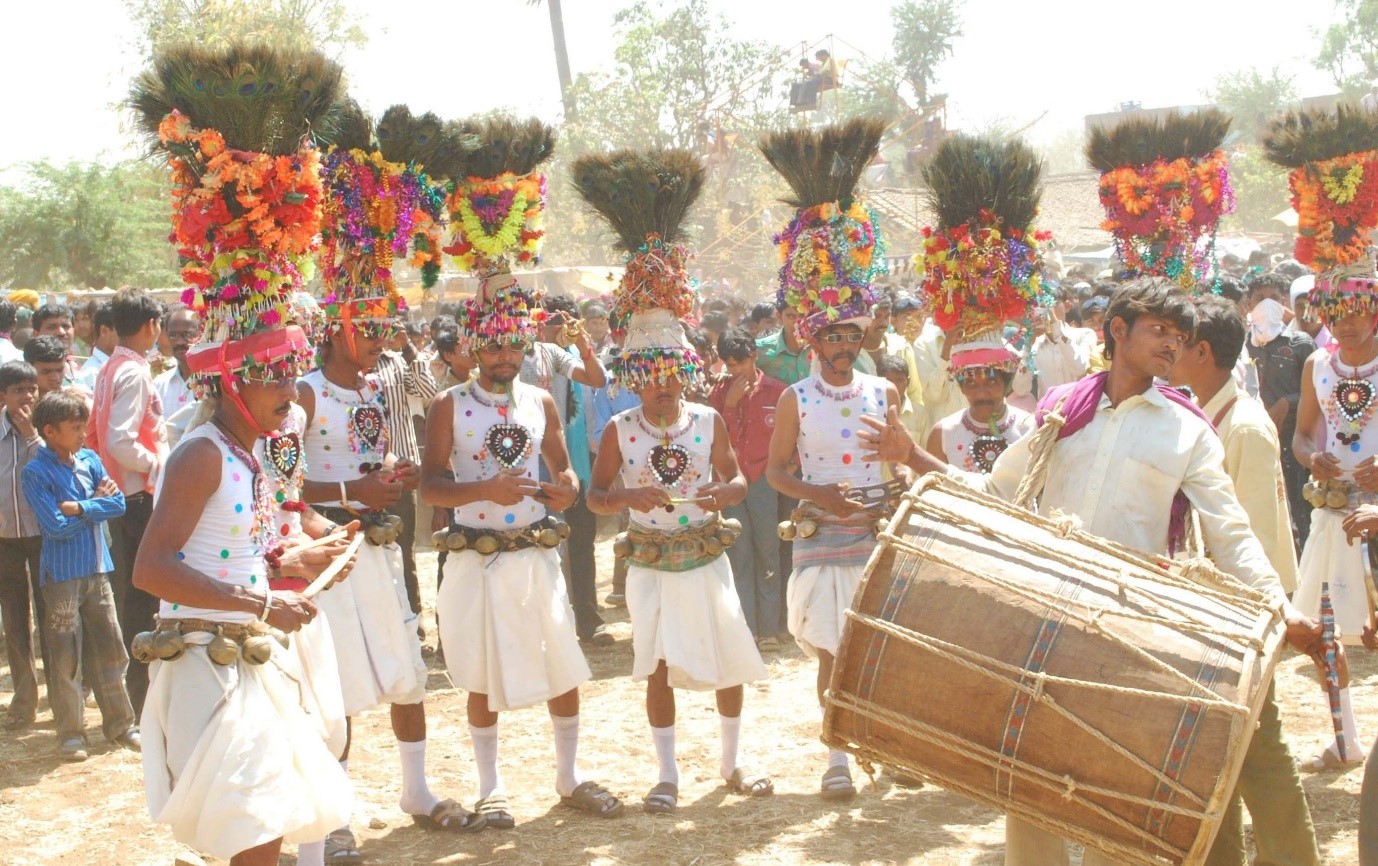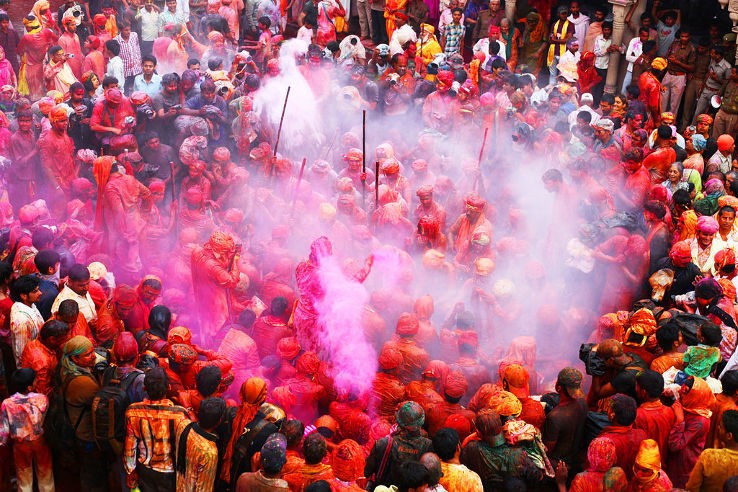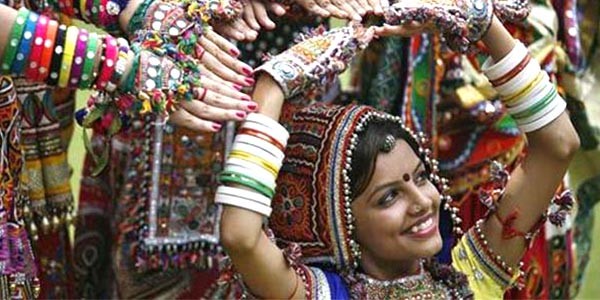- Private car and driver in Delhi / India
- +91-8447445445
- info@discoverindiabycar.com sugar.ankit@yahoo.com
 +91-9818434712
+91-9818434712
Bhagoria Festival: Everything You Need to Know
The tribal population of Madhya Pradesh is not only an essential component of the state’s culture, but they are also the source of the colorful graffiti that is visible throughout the entire region. They think that clinging to their traditional beliefs, morals, and tribal heritage is the only way to preserve their distinct culture. The ideal opportunity to get a taste of this colorful culture and its distinctive customs is during the Bhagoriya festival in Alirajpur. This celebration, which takes place a few days before Holi, marks the arrival of spring. This boisterous celebration promises plenty of drinking, dancing, singing, and overall revelry.
It is customary in the Indian states of Maharashtra and Madhya Pradesh to observe this holiday. The historic festival formerly known as Malwa has a new name: Bhagoria. Among the indigenous communities that participate in the Bhagoria Haat celebrations are the Bhil, Bhilala, and Barela. Locals and tourists from all over the world swarm to the event to take part in the grand celebration.
Bhagoriya Festive Clothes:

Bhagoriya is commonly believed to have been constructed during the reign of Raja Bhoj. During this time, two monarchs by the names of Balun and Kasumar began to attend fairs held in Bhagor, the capital city of Bhil. Eventually, the Bhil monarchs of the surrounding regions began to follow them as well, and the term Bhagoriya quickly gained popularity for the marketplaces and celebrations in the area. But everyone has not the similar opinion on this. Since the first light of dawn, a number of teenage groups have been moving through the fair, strumming flutes, percussion, and drums. The tribal girls are simultaneously getting tattoos all over their hands. Indigenous cultures also have a tobacco smoking population. But as time has gone on, the song’s general tone has evolved. Boys from native tribes are frequently observed donning contemporary attire as opposed to traditional garb. Villagers from Rajasthan and Gujarat travel to the fair as well.
Myth centred on the celebration
One of the numerous meanings of Bhagoria is “to flee” or “elope,” which comes from the root word “Bhag.” As the event is also known as the match-making festival, the phrase “which is the tribe’s context” alludes to the moment when the men leave with the women they like.
The original festival heroes and heroines were named Bhav and Gauri, which are also the names of Shiva and Parvati, according to one of the many legends that surround this event. The result of this tale is an event named Bhagoria, which is purportedly a mixture of these two names.
The villagers also say that King Bhagore, who is said to have permitted his warriors to elope with the females they fell in love with at the haat after capturing the region, is the source of the name.
Activities
According to tradition, the young man should present the girl he intends to marry a scarlet powder known as gulal. Moreover, when the girl is ready, she applies red powder to the boy’s face.

The boy will succeed in convincing her, though maybe she may reconsider before taking him up on his offer. Given that it falls at the end of harvest season, this festival holds special significance for farmers. In addition, some people celebrate the end of the harvest on this occasion.
In honor of Republic Day in 2015, Madhya Pradesh will showcase this festival. Many, though, contend that the festival mentioned above is a false representation of the actual events. They believe that the Haat is only a location for people to purchase items associated to Holi. Furthermore, they claim that matching young men and women has never been done previously.
Happy and Exhilarating Ambience of Bhagoria Festival
This is an opportunity to explore the core of tribal culture at ‘Bhagoria’. A wide variety of vendors may also be present, offering anything from produce and fruits to silver jewelry and ceramic pots. You should definitely check out the haats for some amazing shopping if you’re at the event.
The celebration’s timing
Since March is the month before Holi, the entire month is dedicated to celebrations.
There will be a scheduled market during the seven days that the festival is in full swing. Many people go to the market before Holi to buy supplies and decorations. Moreover, it is stated that every family member, wherever they may be, takes a plane back to their native country on Holi. As a result, the haat is arranged before Holi.
Happy Bhagoria celebrations

The haat is a marketplace that functions similarly to a marriage market, where young people go to select life companions. People rejoice and express gratitude in celebrating this holiday since it signifies the end of the harvest season. Owing to its coincidental connection with the end of harvest season, the festival holds agricultural significance as well.
The vendors in the market sell a wide variety of goods, including chocolates, silverware, and clay pots. There are other tourist attractions including rides in helicopters and enormous wheels.
During the event, males who are in love with a woman can show their feelings by dotting her with a bright color. If the girl loves the boy back, then it’s fine to accept the proposal and give the boy some color. During all of these ceremonies, including the color exchange, the child is not encouraged to act angrily, and everyone behaves politely the entire time. The festival is vibrant and colorful, with several tribal customs and ceremonies. If you would like to participate in this amazing and one-of-a-kind event, you should make every effort to travel to India.

How to reach there?
By Air:
The closest airport to Alirajpur from the air is Ahilyabai Holkar Airport in India, which is about 250 kilometers away. The festivities are being held in Jhabua and Alirajpur, which are 85 kilometers apart. You can arrange for taxis in Indore with the assistance of MP Tourism (Tel: 0731-2499466). The prices per kilometer vary from ₹9 to ₹14.
By Rail:
Meghnagar Railway Station, located on the Delhi-Mumbai line and eighteen kilometers away, is the easiest place from which to go by rail to Jhabua. Passengers take the Golden Temple Mail, which departs from Mumbai Central and makes stops in Vadodra and Delhi on route to Amritsar. A few more possibilities are the Mumbai–Jaipur SF Express, the Mumbai–Firozpur train, and the Avantika Express, which departs from Indore. To Jhabua, a taxi fare ranges from ₹400 to ₹500. There are almost 100 kilometers separating Alirajpur and the station.
By Road:
Jhabua is located on the Indore-Ahmedabad National Highway 59 and is around 150 kilometers from Indore via Ujjain. For a kilometer, taxi journeys cost between ₹9 and ₹14. Because the event will take place across multiple municipalities in the district, rates for the duration of stay will need to be negotiated. There are 180 kilometers separating Vadodara and Alirajpur. The roads are roomy, kept up, and make for a comfortable ride. MP Tourism is offering travel packages that include accommodation and transportation during the festival.
If you’d prefer to travel by bus, there are numerous direct routes that connect Alirajpur and Indore that run throughout the day.

Conclusion
The word “bhagoria” has historically been used to describe farming practices. This process is carried out beginning at the end of harvest season. For this reason, the people celebrate the end of the same with a party. The event is a fantastic opportunity to witness the young people from the tribal villages performing local music, dances, and instruments while dressed in their colorful traditional attire.
FAQs:
Q1. Why visit bhagoria festival?
A. A few days before to Holi, the event kicks off the spring season and is a celebration of the arrival of spring. This is a noisy celebration that is accompanied by singing, dancing, and revelry that is fueled by alcohol. The Bhagoria Festival is a celebration that is particularly important to the Bhils, and it is primarily celebrated in the districts of West Nimar, Jhabua, and Alirajpur.
Q2. What is the Bhagoriya festival in Chhattisgarh?
A. One of these lively carnivals is called “Bhagoria,” and it is celebrated by a number of different tribes, including the Bhil and the Bhilalas. In Bhagoria, young people and girls from tribal communities who were dressed in colorful traditional garb could be seen dancing and singing in groups.
Q3. When bhagoria festival is celebrated?
A. In the month of March, seven days prior to the Holi Festival, it is celebrated across the entire month.











